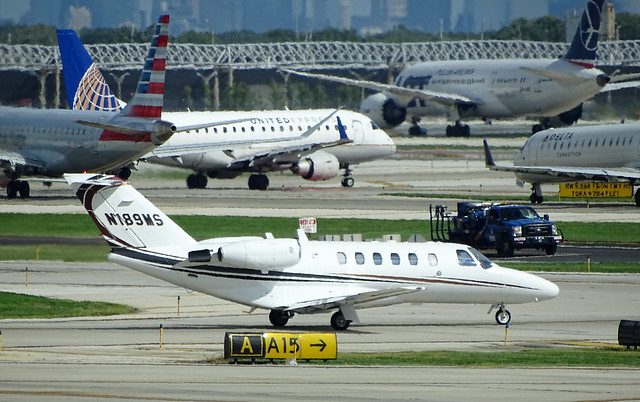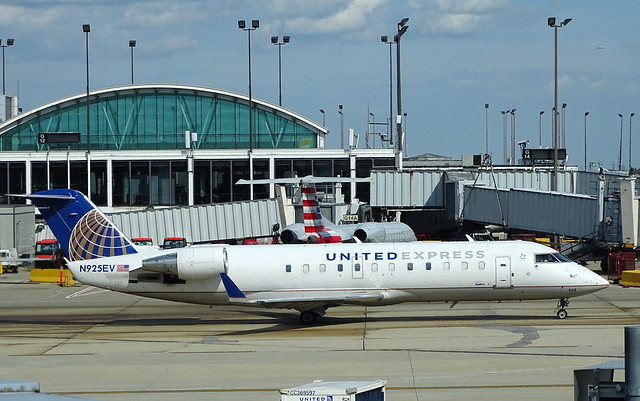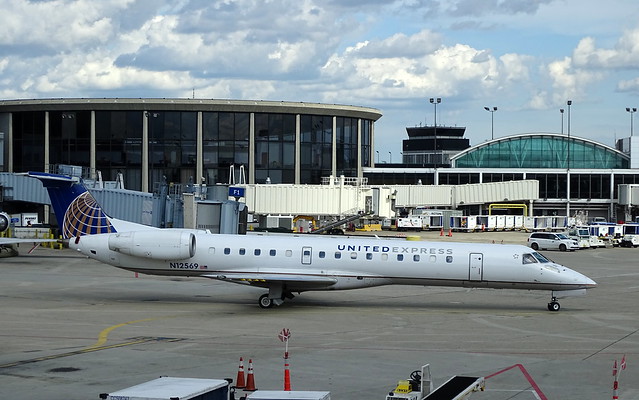- Home
-
My Models
-
AV History
- Airline History Blog
-
Airline Development
>
-
Liveries
>
- Aeroméxico Liveries
- Air China Special Liveries
- American Airlines Liveries
- British Airways Liveries
- Continental Airlines Liveries
- Delta Air Lines Liveries
- Eastern Air Lines Liveries
- Landor Liveries
- National Airlines Liveries
- Northeast Airlines Liveries
- Northwest Airlines Liveries
- Pan Am Liveries
- Trans World Airlines Liveries
- United Airlines Liveries
- Western Airlines Liveries
- Airbus A380s >
- Boeing 747 >
- Real Airport Histories >
- Plane Spotting >
- Aviation Stickers >
-
1:400 SCALE
- Collecting 1:400 Scale >
- The History of 1:400 Scale >
-
1:400 Brands
>
- Aeroclassics >
- Airshop Diecast
- AURORA Models
- Aviation400 (2007-2012)
- Big Bird 400 Your Craftsman
- Black Box Models
- Blue Box & Magic Models
- C Models
- Dragon Wings
- El Aviador 400
- Gemini Jets >
- JAL Collection / Jet Hut >
- Jet-X >
- MP4 Models
- NG Models >
- Panda Models >
- Phoenix Models >
- Seattle Models Co (SMA)
- Skyjets400
- Sovereign Models
- TucanoLine
- Witty Wings / Apollo
- Yu ModeLs
- 1:400 Custom Models >
- Production Numbers
- Zinc Rot
-
1:400 Moulds
- The Best Moulds >
- Airbus >
-
Boeing
>
- Boeing B-377 Stratocruiser
- Short Boeing 707s & 720s
- Boeing 707-320/420
- Boeing 717
- Boeing 727-100
- Boeing 727-200
- Boeing 737-100/200
- Boeing 737-300 >
- Boeing 737-400
- Boeing 737-500
- Boeing 737-600
- Boeing 737-700/800/900 >
- Boeing 737 MAX
- Boeing 747-100/200 >
- Boeing 747-400 >
- Boeing 747SP
- Boeing 747-8 Interactive
- Boeing 747LCF Dreamlifter
- Boeing 757-200 >
- Boeing 757-300
- Boeing 767-200
- Boeing 767-300
- Boeing 777-200
- Boeing 777-300
- Boeing 787
- British >
- Douglas >
- Lockheed >
- Other >
- Chinese >
- Soviet >
- Smallest Moulds in 1:400
-
1:400 Reviews
-
Model News
- Model Blog
-
New Mould Samples
>
- Aviation400 >
- JC Wings >
-
NG Models 400 Scale
>
- Airbus A318
- Airbus A319/320 CEO
- Airbus A319/320 NEO
- Airbus A321CEO & NEO
- Airbus A330-200/300
- Airbus A330 Beluga XL
- Airbus A330-800/900
- Airbus A340-200/300
- Airbus A350-900
- Airbus A350-1000
- Boeing 737-600/700/900
- Boeing 737-600 Refresh
- Boeing 737-800
- Boeing 737 MAX-8/MAX-9
- Boeing 737 MAX-7/MAX-10
- Boeing 747-100
- Boeing 747-200
- Boeing 747-400
- Boeing B747SP
- Boeing 747-8I
- Boeing 747-8F
- NG 747s Together
- Boeing 757-300
- Boeing 767-200/300 >
- Boeing 767-400 >
- Boeing 777-200
- Boeing 777-300/300ER
- Boeing 787-8
- Lockheed L-1011 Tristar
- Lockeed Tristar 500
- McDonnell Douglas MD-80
- McDonnell Douglas MD-87
- Tupolev Tu-154
- Tupolev Tu-204/Tu-214/Tu-234
- NG Models 200 Scale >
- Phoenix Models >
- Yu ModeL >
-
1:600 SCALE
- DIORAMAS
NOTE: Almost all the images in this post can be viewed in greater size at my FlickR site or by clicking on them.
One of the great things about O’Hare is that in many ways it still retains the look and feel of an airport from the 1960s and 70s. Yes, the old side on gates, with double airbridges, attached to early 707s, DC-8s and CV-880s, are long gone and you can no longer see large numbers of props awaiting boarding from ground level, but at least in terminals 2 and 3 much of the original shape of the classic field remains.
Traffic may nowadays be more boring than at any time in the field’s history, thanks to the consolidation of the US airlines into the big 3, but even so it is surely hard for an aviation fan to not get excited by the sheer size and dynamism of the airport. At least ORD still serves as a major hub for two of the big three and it is the busiest airport in the world in terms of aircraft movements (with nearly 904,000 in 2018). In terms of the world’s busiest airport, by passengers, ORD sat at no 6 in 2018 but, for a spotter, movements matter more than passengers.
AKL-ORD
My flight from Auckland left after 9pm on a Wednesday night and was the near 15-hour direct Air New Zealand flight NZ26. My steed was the Boeing 787-9 ZK-NZL. My work colleague got cheekily upgraded to premium economy by his dad but for me it was economy all the way, which wasn’t as bad as it could have been as NZ is a good airline and the 787 is noticeably easier to fly long distances on. The flight was as good as any flight of that length could be, and uneventful. We landed at ORD on runway 10C at roughly 6pm on the same day we left New Zealand (thanks to the quirk of timezones).
As I was on the starboard side of the aircraft upon landing I could see the Southwest Cargo ramp with several FedEx Boeing 757s and 767s in attendance. As we turned off the runway and taxied back up taxiway P I got the first good view of the central terminal complex and the impressive array of aircraft taxiing around. Photo quality through the window of the 787 was limited admittedly.
Due to the hub status and number of smaller regional jets in operations there appeared to be a lot more moving traffic than I’d seen at airports like Hong Kong, Guangzhou and London Heathrow even though Chicago has a lot more runways to spread the movements between than any of those.
The taxi to the international terminal (T5) was quite long and took us past terminals 2 and 3 (unfortunately on the wrong side of the aircraft for me). We finally docked at one of the early M gates (M4 or 5 I think) and next to a Norwegian 787-9.
Below: This 2019 delivery ExpressJet E-175 was the only aircraft I saw the whole trip wearing the new United livery
I was disappointed that once off the aircraft there were no views of the airfield from within the terminal whatsoever for arriving passengers. It was quite a walk to security and the usual barrage of not particularly friendly security staff. Still I got through quickly even though my colleague’s finger prints refused to match with the records on hand and he was delayed.
I spent two days in Chicago for work and our return flight was scheduled for Saturday afternoon, which coincided with my birthday.
ORD-LAX - Terminals 1 and 2
What made the trip for me was that we weren’t getting the same direct flight back to New Zealand, but instead were scheduled to fly United from ORD-LAX, where we’d connect with the LAX-AKL Air New Zealand flight. Of course, the bonus was that this meant rather than travelling through the separate international terminal I was let loose inside the combined domestic terminals. We got to the airport with plenty of time for me to explore and my colleague dutifully followed me around for the next 3 hours while I walked the entire length of all the domestic terminal piers.
To be honest I hadn’t expected to be able to get out of the primary United terminal (T1) into the others but once through security there are no restraints on walking around the whole structure, except that it’s a bloody long walk with no travelators!
Below: Pushback sequence for A319 N818UA
Despite its age, or maybe because of it, the terminals are really well designed for viewing. There isn’t the insane number of shops blocking views you find at many more modern terminals, plus the gates do not have separate gate lounges. So along with the large expanses of glass there are thousands of spots from which to get close to the aircraft and take decent shots through the glass, without a lot of sunstrike. Of course you've got to not mind ramp clutter but I actually like more interesting shots of aircraft at gates.
Above: This 73G was originally delivered to Copa Airlines of Panama
The order of my walk was left at T1 towards the B1-B8 gates then onto T2’s E and F concourse, then up pier G, across to T3 up pier H and K, and then finally into L. Once back into T1 I skipped across the underground walkway to the pier C satellite and then back to my actual gate (B6).
Traffic in Terminal 1 is of course dominated by United Airlines. The only other aircraft I saw was an All Nippon 77W, Lufthansa A340 and 747-8 and a Trans State ERJ-145 (in its own colours).
It is terminal 2 and 3 that have more of the original feel of the early O’Hare since they have the same overall structure as when built. This won’t last long as T2 is scheduled to be replaced as part of the O’Hare Global Terminal development. I understand the need for this but it still makes me sad and I’m glad I got to visit the old facility before it is demolished in the early 2020s.
Below: An impression of the OGT development with two new satellites and the new central terminal replacing the existing Y shaped T2. Better for passengers but not as interesting for enthusiasts.
Terminal 2’s aircraft facilities are in the classic shape of a big Y with the left-side E concourse home to most of the United Express E-Jet fleet (flown by SkyWest, ExpressJet, Republic and Trans States) plus a couple of gates for Air Canada.
Walking up the E side of T2's Y shaped pier there is a transition from United Express to Delta whose 6-8 gates wrap around the inside of the E pier. The Delta traffic mainly consists of Boeing 717s, Airbus A320s and some Delta Connection CRJs.
The right-side F concourse is once again United Express territory albeit mainly the smaller ERJ-145s and CRJ-200s. These are flown by Air Wisconsin, ExpressJet, GoJet and Skywest.
Being close to the active runways 10L/28R, 10C/28C and 4R/22L the ends of pier F, G, H and K also make good spots to view traffic departing and arriving. Even so heat haze is a problem.
Above: This A320 has caught a case of ramprash
Below: There are still some Spirit A320s in their old colours
Walking down the F side of Terminal 2 you get a view across to Terminal 3's Pier G, which is where American Airlines begins to takeover from United. Pier G had a couple of gates for Alaska Airlines but was otherwise dominated by American Eagle carriers - mainly Envoy Air and American Eagle itself.
Among the American Eagle ERJs there was also a single SkyWest CRJ in the airline's own, rather bland, colours.
Above & below: Despite what it says on the nose Alaska isn't all Boeing anymore
Above and below: N12569 looks rather worse for wear
As I transition from Terminal 2's F pier over to Terminal 3's G pier we'll pause this review. In part 2 I take in the American Airlines terminal and look over to the non-affiliated airlines L pier. Then its across to the International terminal, before returning to terminal 1, where I go under the taxiway to the satellite pier C.
0 Comments
Leave a Reply. |
Author
I'm Richard Stretton, an aviation enthusiast and major collector of 400 scale model aircraft. This blog discusses ongoing events in the world of 400 scale. This site is free. Please donate to keep it going.
|
- Home
-
My Models
-
AV History
- Airline History Blog
-
Airline Development
>
-
Liveries
>
- Aeroméxico Liveries
- Air China Special Liveries
- American Airlines Liveries
- British Airways Liveries
- Continental Airlines Liveries
- Delta Air Lines Liveries
- Eastern Air Lines Liveries
- Landor Liveries
- National Airlines Liveries
- Northeast Airlines Liveries
- Northwest Airlines Liveries
- Pan Am Liveries
- Trans World Airlines Liveries
- United Airlines Liveries
- Western Airlines Liveries
- Airbus A380s >
- Boeing 747 >
- Real Airport Histories >
- Plane Spotting >
- Aviation Stickers >
-
1:400 SCALE
- Collecting 1:400 Scale >
- The History of 1:400 Scale >
-
1:400 Brands
>
- Aeroclassics >
- Airshop Diecast
- AURORA Models
- Aviation400 (2007-2012)
- Big Bird 400 Your Craftsman
- Black Box Models
- Blue Box & Magic Models
- C Models
- Dragon Wings
- El Aviador 400
- Gemini Jets >
- JAL Collection / Jet Hut >
- Jet-X >
- MP4 Models
- NG Models >
- Panda Models >
- Phoenix Models >
- Seattle Models Co (SMA)
- Skyjets400
- Sovereign Models
- TucanoLine
- Witty Wings / Apollo
- Yu ModeLs
- 1:400 Custom Models >
- Production Numbers
- Zinc Rot
-
1:400 Moulds
- The Best Moulds >
- Airbus >
-
Boeing
>
- Boeing B-377 Stratocruiser
- Short Boeing 707s & 720s
- Boeing 707-320/420
- Boeing 717
- Boeing 727-100
- Boeing 727-200
- Boeing 737-100/200
- Boeing 737-300 >
- Boeing 737-400
- Boeing 737-500
- Boeing 737-600
- Boeing 737-700/800/900 >
- Boeing 737 MAX
- Boeing 747-100/200 >
- Boeing 747-400 >
- Boeing 747SP
- Boeing 747-8 Interactive
- Boeing 747LCF Dreamlifter
- Boeing 757-200 >
- Boeing 757-300
- Boeing 767-200
- Boeing 767-300
- Boeing 777-200
- Boeing 777-300
- Boeing 787
- British >
- Douglas >
- Lockheed >
- Other >
- Chinese >
- Soviet >
- Smallest Moulds in 1:400
-
1:400 Reviews
-
Model News
- Model Blog
-
New Mould Samples
>
- Aviation400 >
- JC Wings >
-
NG Models 400 Scale
>
- Airbus A318
- Airbus A319/320 CEO
- Airbus A319/320 NEO
- Airbus A321CEO & NEO
- Airbus A330-200/300
- Airbus A330 Beluga XL
- Airbus A330-800/900
- Airbus A340-200/300
- Airbus A350-900
- Airbus A350-1000
- Boeing 737-600/700/900
- Boeing 737-600 Refresh
- Boeing 737-800
- Boeing 737 MAX-8/MAX-9
- Boeing 737 MAX-7/MAX-10
- Boeing 747-100
- Boeing 747-200
- Boeing 747-400
- Boeing B747SP
- Boeing 747-8I
- Boeing 747-8F
- NG 747s Together
- Boeing 757-300
- Boeing 767-200/300 >
- Boeing 767-400 >
- Boeing 777-200
- Boeing 777-300/300ER
- Boeing 787-8
- Lockheed L-1011 Tristar
- Lockeed Tristar 500
- McDonnell Douglas MD-80
- McDonnell Douglas MD-87
- Tupolev Tu-154
- Tupolev Tu-204/Tu-214/Tu-234
- NG Models 200 Scale >
- Phoenix Models >
- Yu ModeL >
-
1:600 SCALE
- DIORAMAS











































































 RSS Feed
RSS Feed